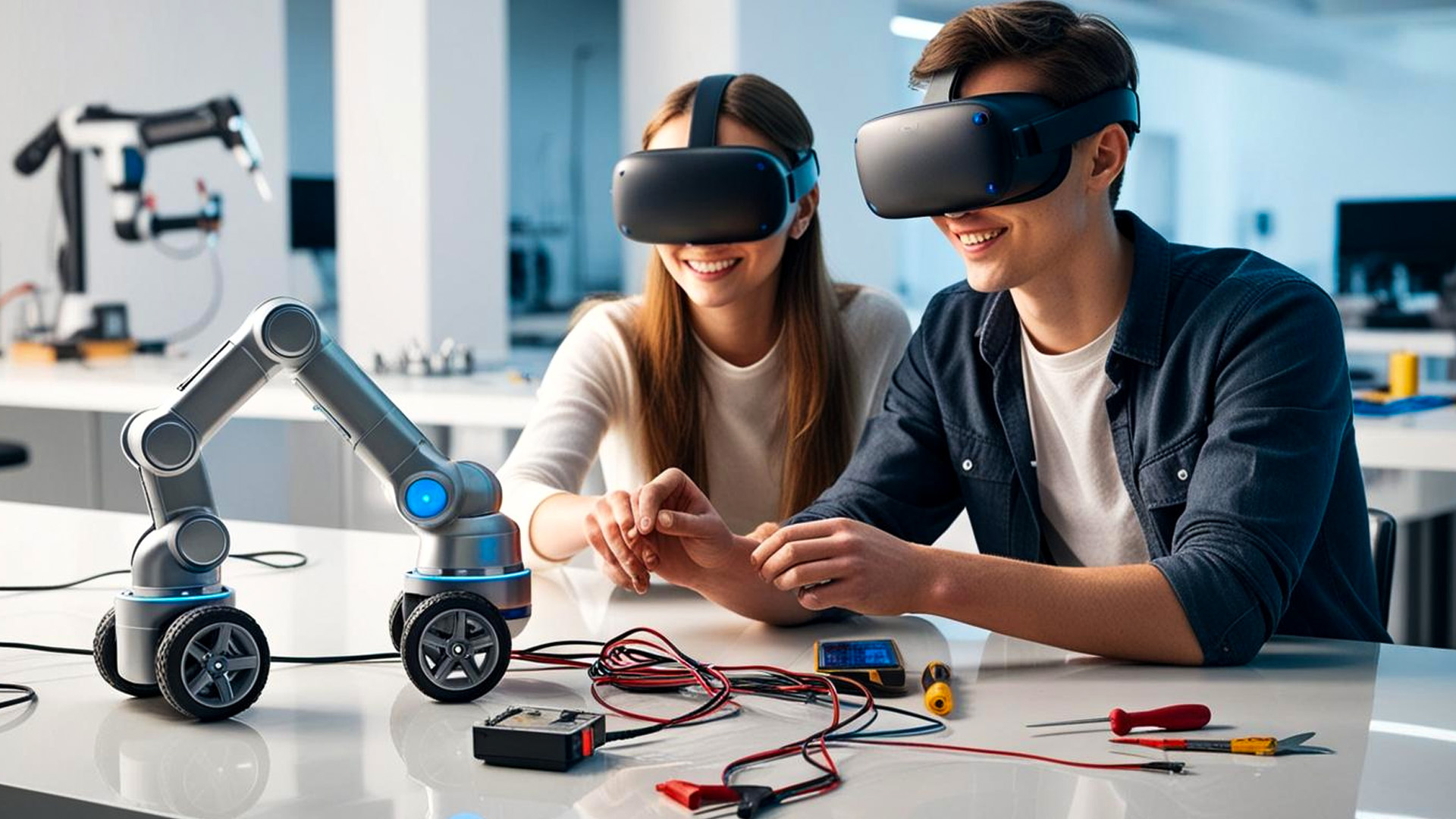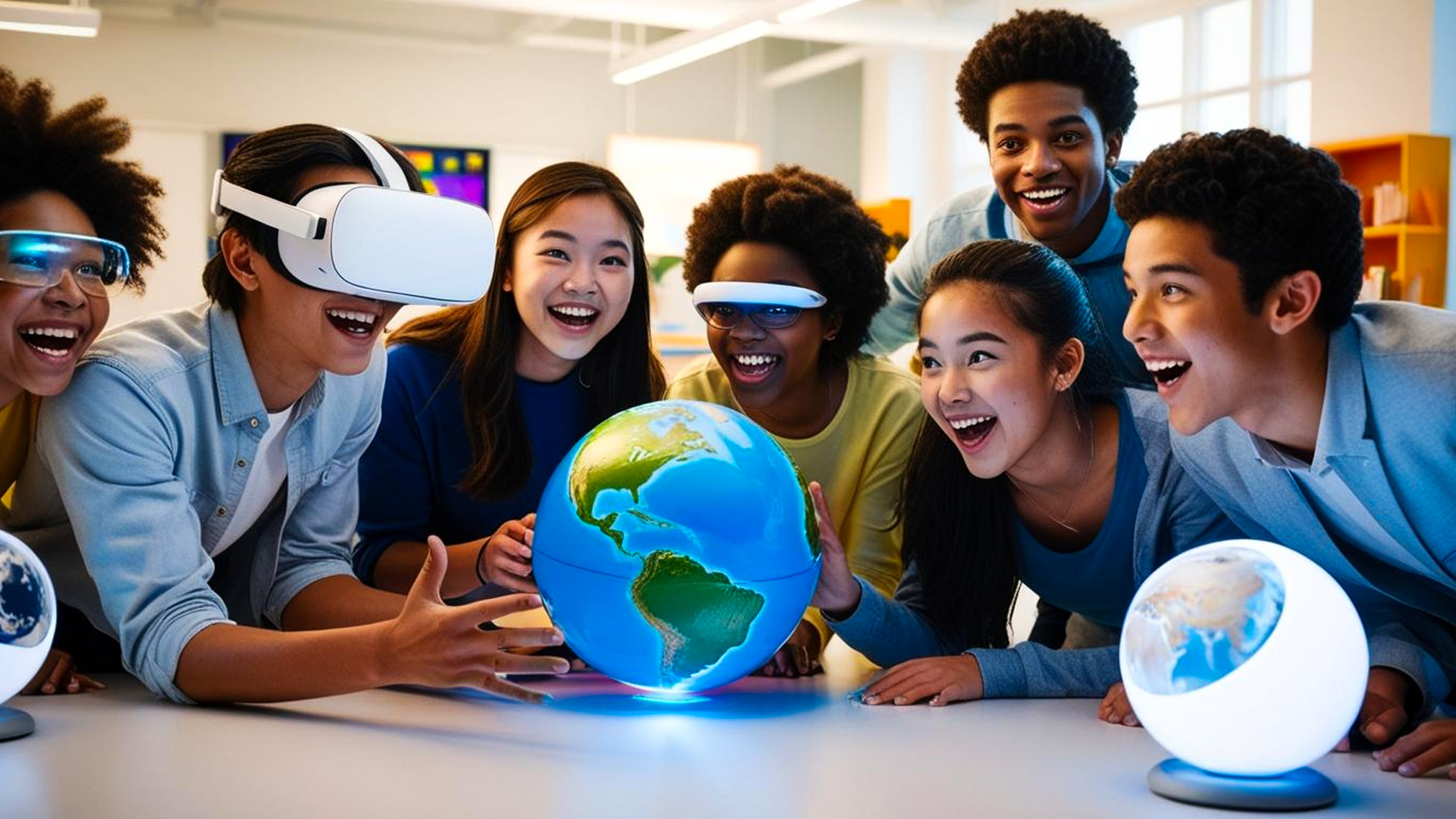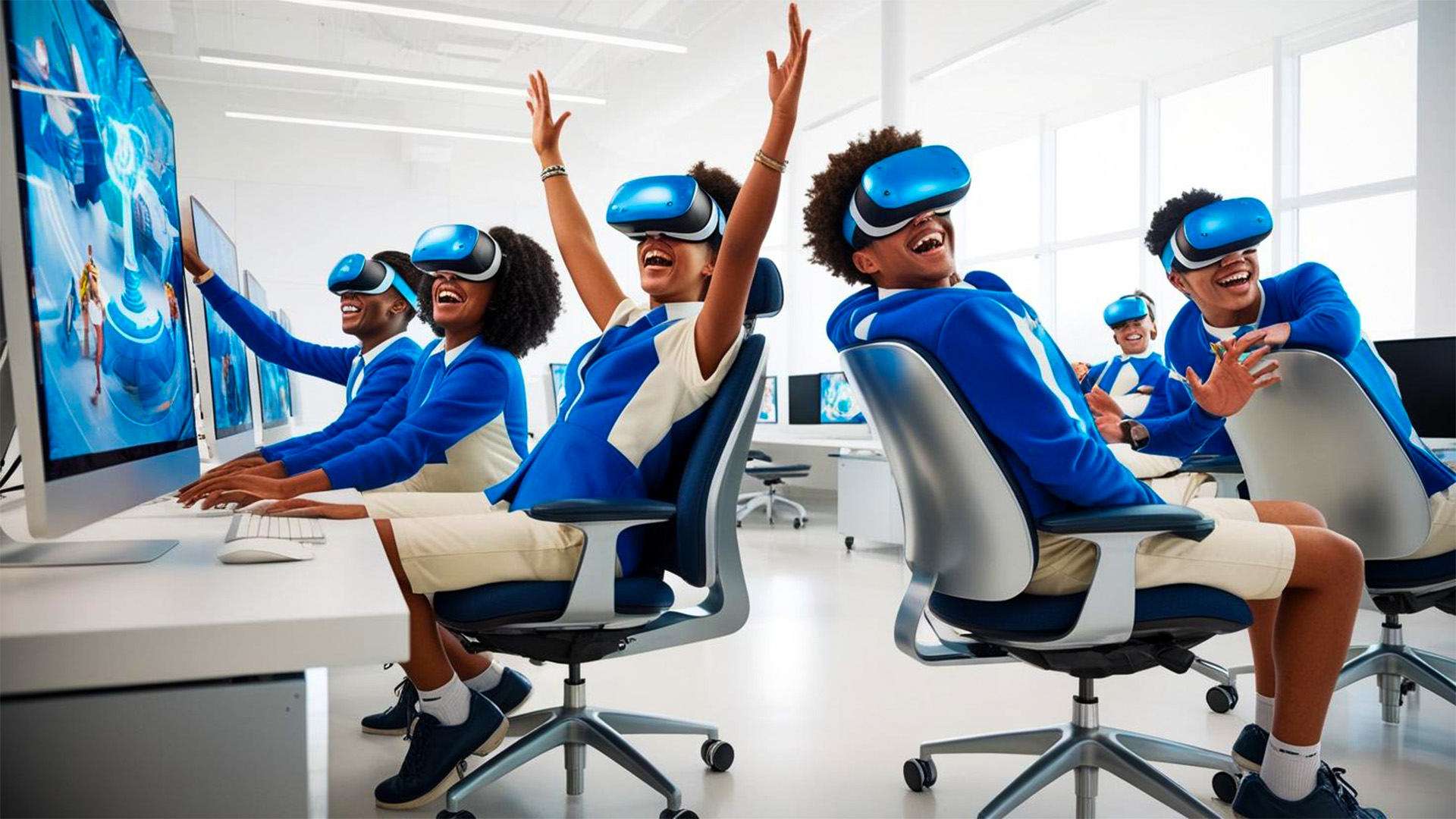Immersive Learning in a Virtual Sphere
Virtual reality (VR) has rapidly transcended its entertainment origins to become a formidable tool in the realm of education. This evolving technology leverages immersive experiences to engage learners in ways traditional methods rarely achieve. By integrating cutting-edge cognitive science with dynamic, sensory-rich environments, VR unlocks new neural pathways for memory encoding and retention. It invites learners to step beyond conventional classroom walls, offering a multidimensional learning space where abstract theories can be visualized and complex ideas can be interacted with directly. This blog navigates through research, practical insights, and forward-thinking perspectives to reveal how immersive learning transforms educational paradigms.
Empirical Foundations: VR and Cognitive Science
Neurological Engagement and Stimulus Processing
Engaging with VR environments triggers a cascade of neurological responses that enhance learning experiences. Immersive visuals, auditory stimuli, and even haptic feedback converge to stimulate multiple regions of the brain simultaneously. Such multisensory stimulation promotes a more integrated learning process, where traditional lecture-based methods are enriched with dynamic, real-time engagement. As learners navigate virtual landscapes, their attention is not merely captured but dynamically steered toward novel stimuli, fostering a cognitive state that encourages active processing and comprehension. The confluence of sensory data creates a robust neural imprint that can lead to improved stimulus processing and long-term retention.
When considering the neurological underpinnings, researchers have likened VR-induced engagement to a symphony of neural activation. In controlled experiments, participants immersed in VR settings consistently outperformed their peers in traditional settings regarding attention span and recall accuracy. The immersive experience serves as an effective catalyst for deep cognitive engagement, harmonizing visual and auditory inputs in a manner reminiscent of complex orchestral arrangements. This multisensory stimulation is crucial for creating an optimal learning environment where abstract concepts become tangible through interactive experiences. The dynamic interplay of stimuli primes the brain to forge enduring cognitive connections, ensuring enhanced memory retention over time.
Enhanced Memory Encoding through Immersive Design
Immersive design within VR environments facilitates memory encoding by embedding learners in a narrative-rich, interactive space. The ability to witness historical events, manipulate 3D models, or simulate scientific experiments adds layers of contextual depth that are difficult to replicate through textbooks alone. Studies in cognitive science suggest that active participation in an experience, as opposed to passive observation, significantly boosts the brain’s ability to encode and recall information. By intertwining visual splendor with interactive decision-making, VR creates an environment where theoretical knowledge is bolstered by tangible experience, ultimately fostering a lasting educational impact.
The meticulous design of VR lessons transforms abstract information into experiential narratives. As learners traverse these digital landscapes, they build intricate mental maps where academic concepts merge with personal experiences, making the subject matter more relatable and easier to recall. The immersive design incorporates spatial memory cues and storytelling techniques that act as cognitive anchors. These elements significantly enhance neural pathways related to learning and retention. By situating learning within a virtual context that simulates real-world scenarios, VR provides not only an engaging educational experience but also a robust tool to solidify knowledge retention for future application.
Cognitive Resilience in Virtual Environments
Virtual reality offers a unique platform for cultivating cognitive resilience by challenging learners with scenarios that demand active problem-solving and adaptive thinking. Within these virtual settings, learners are encouraged to overcome obstacles and navigate through unpredictable environments, thereby strengthening their capacity for critical thinking and cognitive flexibility. The immersive challenges serve as mental exercises that enrich neural plasticity, making the brain more adept at processing and storing new information. This form of active learning builds resilience by fostering an environment where trial and error leads to reflective understanding and deeper cognitive engagement.
Cognitive resilience in VR is akin to training the mind in a digital gymnasium, where every challenge contributes to intellectual fortitude. As learners engage with scenarios that require rapid decision-making, they develop strategies to overcome cognitive fatigue and enhance concentration. The safe, controlled nature of VR simulations permits multiple attempts at solving complex tasks, reinforcing learning through repetition and adaptation. This iterative process not only reinforces memory retention but also equips learners with the mental agility needed to adapt to real-world challenges. The structure of immersive learning thus encourages a resilient mindset, capable of integrating new information while continuously refining cognitive processes.

Boosting Engagement and Motivation in Learning
Dynamic Interaction and Real-World Simulation
Dynamic interactions within VR scenarios elevate traditional learning by simulating real-world environments that encourage active engagement. As learners assume roles, make decisions, and navigate complex virtual landscapes, their educational journey becomes a rich tapestry of interactive experiences. This form of active participation leaves a lasting impression, as each moment spent in a highly detailed simulation reinforces cognitive connections through experiential learning. The blend of interactivity and realism transforms passive absorption of information into a multifaceted, hands-on process that actively involves the learner in every moment, thereby bolstering confidence and competence.
The simulations created in VR are not merely visual spectacles; they are meticulously engineered experiences that mirror the intricacies of real-life situations. Through these virtual replicas, learners encounter diverse scenarios that require immediate analytical responses, encouraging them to apply theoretical knowledge in practical contexts. For example, medical students can perform virtual surgeries and engineers can dismantle and rebuild intricate systems—all without real-world risks. This amalgamation of simulation and interaction cultivates an environment where the thrill of discovery fuels motivation. Ultimately, learners are not only entertained but also deeply educated, as each VR session reinforces the connection between theory and practice.
Leveraging Gamification for Academic Excellence
Gamification within VR takes the challenge of learning and transforms it into an engaging journey marked by rewards, immediate feedback, and strategic problem-solving. By integrating game-design elements such as leaderboards, achievement badges, and progressive difficulty levels, VR platforms spark a competitive yet cooperative spirit among learners. This approach enhances academic excellence by incentivizing participation and turning education into a dynamic quest for knowledge. The gratification derived from overcoming challenges and earning virtual accolades fosters an environment where learning becomes synonymous with playful exploration, thereby increasing both effort and retention.
Incorporating gamification into educational practices creates a vibrant learning ecosystem that mirrors the excitement of video games while retaining the rigor of academic content. Learners are encouraged to experiment, fail, and ultimately thrive within structured gaming frameworks that promote critical thinking and persistence. Story-driven quests within VR not only captivate students but also allow for iterative learning, where mistakes serve as stepping stones toward mastery. The competitive ambiance generated by gamification motivates individuals to continuously push their cognitive boundaries, making the acquisition of knowledge a goal-oriented pursuit filled with tangible milestones. Such immersive learning experiences redefine academic challenges as opportunities for creative problem-solving.
Fostering Curiosity and Continuous Exploration
Curiosity is the linchpin of effective learning, and VR’s immersive landscapes are designed to ignite and sustain a learner’s natural inquisitiveness. These virtual realms invite students to explore uncharted territories and engage with diverse subject matter without the confines of traditional educational settings. As learners venture through digitally rendered worlds, they encounter surprises that provoke thoughtful inquiry and stimulate intellectual growth. This constant engagement with novel stimuli nurtures a mindset of lifelong learning and fosters a proactive approach to problem-solving, where curiosity is continually reinvigorated through the discovery of new information and perspectives.
In these digitally engineered environments, exploration is not just an afterthought but a central pillar of the learning process. VR experiences are structured to reward inquisitive behaviors and encourage learners to dive deeper into subject matter that resonates with their interests. Each exploration unlocks layers of contextual understanding and provides a visual and interactive representation of abstract concepts. These opportunities to explore foster a learning atmosphere where questions are welcomed, and discovery is celebrated. The inherent design of VR nurtures a self-sustaining curiosity that propels learners to seek continuous improvement, ensuring that the quest for knowledge remains an ever-evolving journey.

Transformative Educational Practices with VR
Blending Traditional Pedagogy with VR Innovations
The intersection of time-honored educational practices with modern VR innovations creates a harmonious blend of tradition and technology. By integrating VR modules into conventional classroom settings, educators provide students with an enriched, multifaceted learning experience that deepens comprehension and retention. This hybrid approach leverages the strengths of traditional pedagogy—structured curricula, face-to-face interactions, and proven learning methodologies—while infusing it with immersive, interactive elements. Such a synthesis not only revitalizes instructional delivery but also addresses varied learning styles, meeting students at their unique points of need with tailored, engaging content.
In practice, the fusion of traditional methods and VR innovations acts as a catalyst for transformative learning experiences. Educators who embrace this dual approach report higher levels of student enthusiasm and improved academic performance. The narrative-driven, interactive simulations act as supplements to theoretical instruction, breathing life into static concepts and offering realistic contexts that embed information more firmly in memory. As a result, lessons become more dynamic and responsive to real-world challenges, thereby reinforcing learning outcomes. The careful integration of these methodologies demonstrates how digital innovations can act in concert with established practices, forging a pathway toward future-ready education while preserving the integrity of academic rigor.
Integrating Experiential Learning for Deeper Comprehension
Experiential learning in VR environments transcends conventional methodologies by allowing learners to actively engage with educational content in a vivid, hands-on manner. By participating in immersive simulations, students encounter complex scenarios that require both critical analysis and creative problem-solving. These experiences are designed to mimic real-life challenges, forcing the learner to apply theoretical knowledge in practical situations. This active involvement not only deepens comprehension but also facilitates the retention of complex concepts. Learners are encouraged to experiment, reflect, and iterate on their approaches, thereby constructing a robust mental framework that bolsters long-term understanding and cognitive agility.
Practical applications of experiential learning in VR have shown remarkable promise in fields requiring precision and nuanced understanding, such as medicine, engineering, and the natural sciences. Learners benefit from a safe environment where trial and error are integral parts of the educational journey, free from the consequences that might accompany real-world experimentation. The process of engaging with immersive simulations allows for repeated exposure to complex problems, reinforcing memory retention through consistent practice and reflection. The interactivity of VR transforms learning into an active, iterative process where mistakes serve as a springboard for deeper inquiry and continuous improvement.
Customizing Curricula for Diverse Learning Modalities
VR technology facilitates the customization of curricula to suit diverse learning modalities, addressing the unique needs of every student. By offering interactive experiences that cater to visual, auditory, and kinesthetic learners, VR transforms abstract educational concepts into accessible, multi-layered experiences. Tailored simulations adapt in real-time to a learner’s pace and progress, ensuring that challenging material is presented in an engaging and digestible format. This flexible, adaptive approach promotes individualized learning paths, allowing educators to address varied cognitive preferences and ensure that every student can assimilate knowledge at their own pace without being constrained by conventional, one-size-fits-all teaching methods.
The intrinsic versatility of VR platforms empowers educators to construct curricula that resonate with each learner’s strengths, while also accommodating areas where further support may be necessary. Detailed analytics and real-time feedback help educators fine-tune the educational content and delivery methods, providing targeted interventions when needed. This level of customization transforms the learning experience into a dynamic and iterative process, where feedback loops drive continuous refinement of teaching strategies. Ultimately, the integration of customizable VR elements into the educational framework nurtures a more inclusive learning environment that champions diversity, fosters academic excellence, and lays the foundation for a more adaptive educational future.

Looking Ahead: The Future of Immersive Education
Scaling VR Implementation Across Global Classrooms
The expansion of VR technology in classrooms worldwide presents both unprecedented opportunities and notable challenges. Across diverse cultural and educational landscapes, VR is being piloted as a means to bridge resource gaps and bring innovative learning experiences into under-resourced schools. Global initiatives are increasingly focused on democratizing access to immersive learning, harnessing the power of digital platforms to deliver high-quality educational content irrespective of geographical limitations. This scaling strategy is underpinned by collaborative efforts between governments, tech companies, and educational institutions. By standardizing VR integration, educators envision classrooms where technology is not a privilege but a ubiquitous tool, enabling equitable learning opportunities on a global scale.
Efforts to scale VR in educational settings are gaining traction as practical case studies demonstrate measurable improvements in student engagement and academic performance. Pilot programs in various regions have revealed that even limited VR exposure can stimulate curiosity and elevate learning outcomes significantly. Collaborative projects are already underway to develop low-cost, high-impact VR modules that can be distributed across diverse learning environments. Such initiatives underscore the commitment to fostering an inclusive, technologically advanced educational ecosystem. The vision for a globally interconnected classroom, driven by immersive learning, promises to not only advance academic excellence but also empower communities with the skills necessary for navigating a rapidly evolving digital future.
Policy, Investment, and Technological Advancements
Strategic policy reforms and robust investment in VR infrastructure are critical catalysts for the widespread adoption of immersive educational tools. Governments and private stakeholders are increasingly recognizing the potential of VR to transform traditional education paradigms. Funding initiatives aimed at integrating immersive technologies in schools are growing, providing educators with the resources they need to implement innovative instructional practices. Simultaneously, technology developers are working closely with academic experts to refine VR hardware and software, ensuring that these systems are intuitive, accessible, and aligned with educational goals. This collaborative drive not only enhances the technological aspects of VR but also cements its credibility as a viable and transformative learning medium.
The nexus between investment, policy, and technological innovation is shaping the future of education in profound ways. Policymakers are now more inclined to allocate budgets that reflect the evolving demands of modern classrooms, encouraging academic institutions to adopt forward-thinking approaches. In parallel, the commercialization of VR technology fosters a competitive environment where rapid innovation is the norm, continually improving the quality and effectiveness of immersive learning experiences. These concerted efforts are laying a strong foundation for a future where educational equity, technological advancement, and policy support converge to form a resilient, dynamic learning ecosystem. The synergy between these elements promises to propel immersive education into the mainstream, fundamentally reshaping how knowledge is conveyed and absorbed.
Long-Term Impact and Continuing Research in VR Pedagogy
Ongoing research in VR pedagogy is uncovering the intricate ways that immersive technology can influence cognitive development and educational outcomes. Longitudinal studies reveal that sustained engagement with VR learning modules can significantly improve retention rates, problem-solving skills, and adaptability. Researchers are meticulously documenting how virtual experiences contribute to a deep-seated understanding of content while simultaneously fostering creativity and analytical thinking. This body of work is critical in justifying further investments and policy support for VR initiatives in educational systems worldwide. The scientific inquiry into VR pedagogy continues to evolve, unveiling insights that might redefine how future generations learn and interact with digital content.
The long-term impact of VR on pedagogy remains a focal point of contemporary academic inquiry, as researchers explore its benefits in a variety of learning domains. Meticulous investigations are shedding light on how immersive experiences catalyze neural pathways and support sustained cognitive growth. Anecdotal evidence from classrooms and controlled experiments alike reinforces the notion that VR is not a passing trend, but a transformative tool with enduring benefits. As ongoing studies delve deeper into neural plasticity and information retention, educators are poised to harness these insights to refine curriculum designs and instructional strategies. The resulting evidence forms a robust argument for the continuous adoption of VR, ensuring that immersive learning remains at the forefront of educational innovation for years to come.


